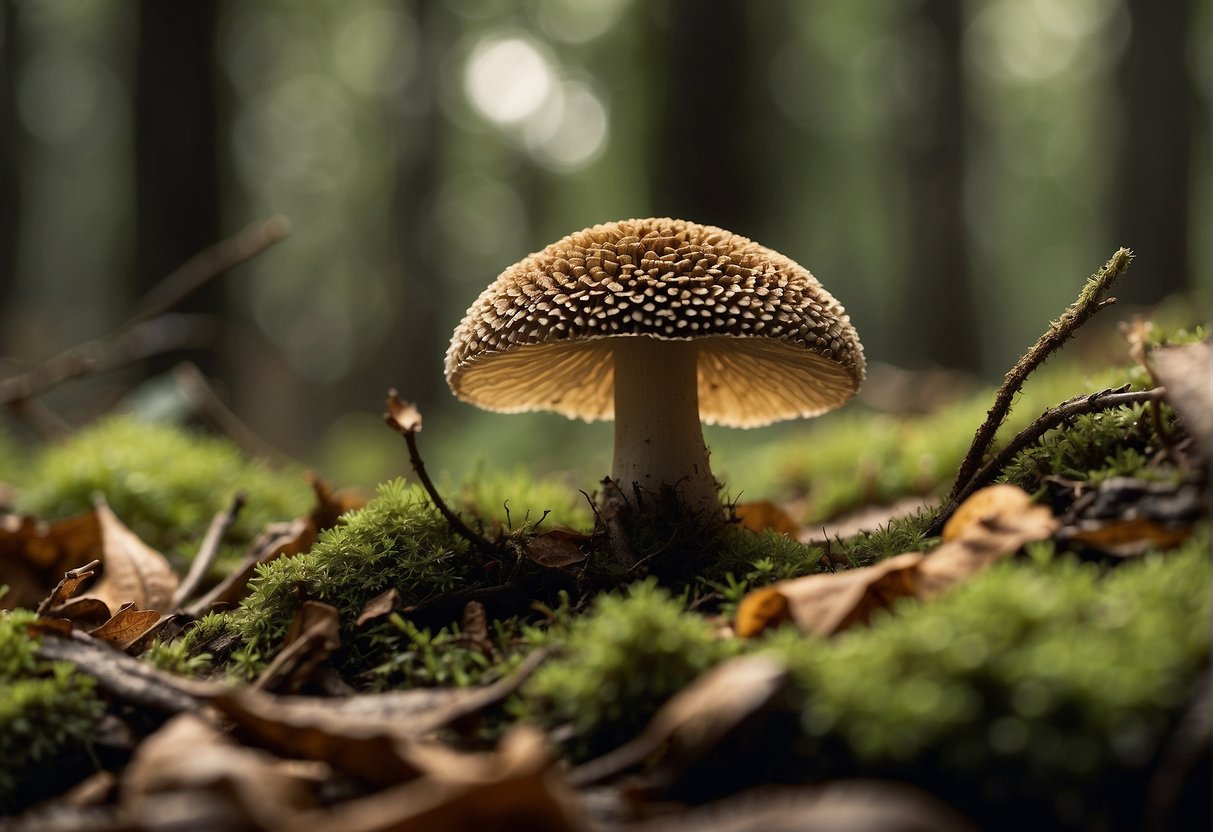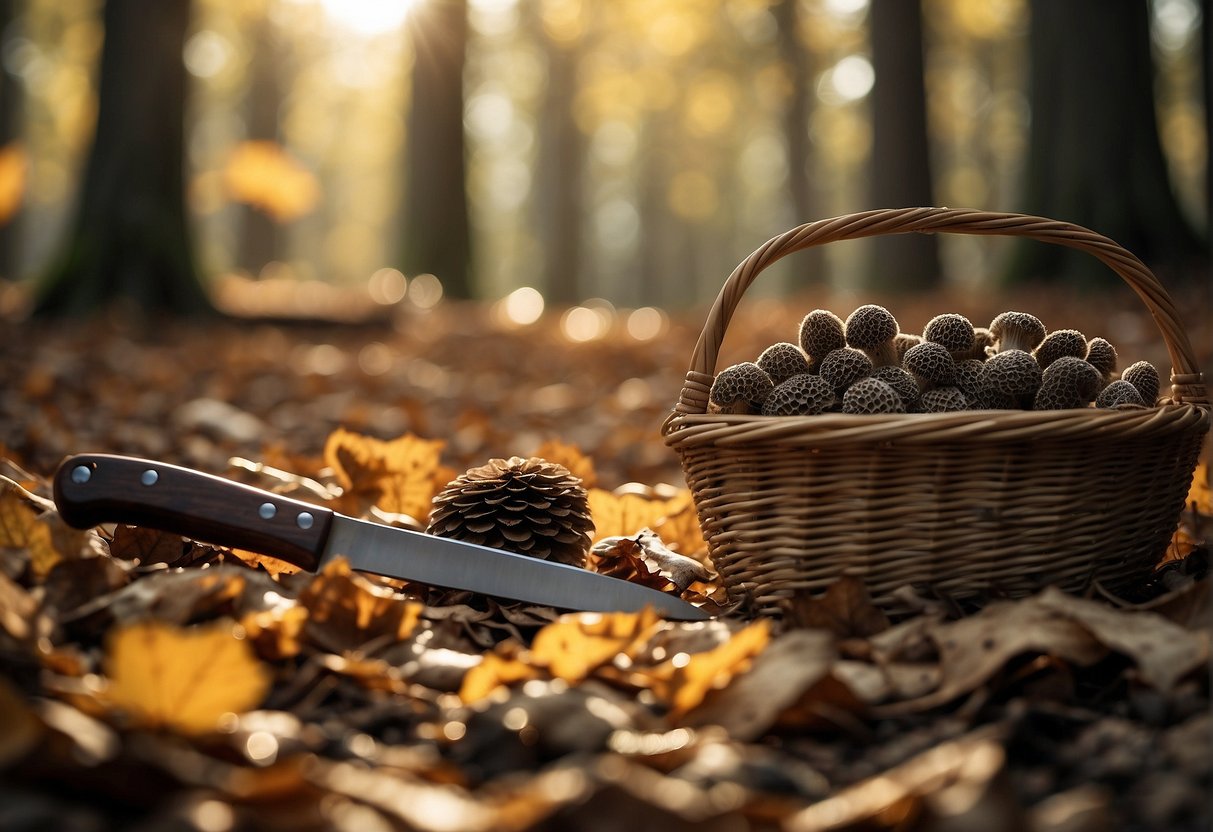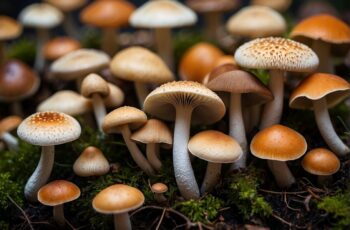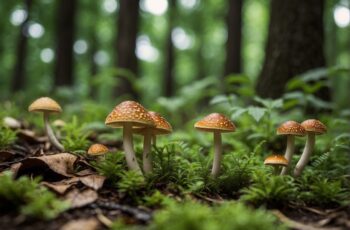Morel hunting is an engaging outdoor activity that invites you into the rejuvenating world of forests and fields in the quest for one of nature’s most sought-after delicacies. These distinctive mushrooms, with their honeycomb-like appearance, captivate the tastes and hearts of foragers each spring. It’s not just about the reward of a delicious meal; it’s a chance to connect with nature, understanding the cycles that bring forth these fungi treasures. Your ability to read the landscape and recognize the subtle clues that morels provide will determine your success.

To embark on this adventure, you’ll need to arm yourself with knowledge and gear. Understanding the conditions morels favor, such as moisture levels, temperature, and their symbiotic relationship with certain trees, enhances your chances of locating them. With the right preparation, from picking the right tools for foraging to knowing how to navigate through your chosen hunting grounds, you’re stepping into a tradition that blends the thrill of the hunt with the joy of outdoor exploration.
Key Takeaways
- Morel hunting combines outdoor adventure with the search for a prized culinary delight.
- Knowledge of morel habitats and growth conditions is key to successful foraging.
- Proper preparation and gear are essential for an effective and enjoyable morel hunt.
Understanding Morel Mushrooms
In the world of foraging, morel mushrooms are a prized find, known for their distinctive honeycomb appearance and rich, nutty flavor. This section dives into the essential knowledge you need to identify and locate these elusive fungi.
Biology and Identification
The morel mushroom, or Morchella, is a type of edible fungus that emerges in the spring. To identify morels, look for their unique cap structure—wrinkled and pitted, resembling a honeycomb, which stands atop a slender, hollow stem. Morels range in color from pale cream to dark brown. The key to distinguishing true morels from their toxic look-alikes, such as the false morel, lies in the cap: true morels have caps that are attached to the stem at the base, not hanging free.
Ideal Habitats
Morels thrive in certain environments, particularly:
- Woodlands: Often near living or dead hardwood trees, such as elms, ashs, and apples.
- Burn sites: Areas recovering from forest fires may experience a flush of morel growth.
- Soil: They favor loamy soil that’s moist but well-drained.
To boost your chances of a successful hunt, remember that morels love the warmth. Seek them out when the ground temperature hits approximately 50-55 degrees Fahrenheit. Post-rain conditions, combined with these temperatures, create an ideal setting for morels to pop up. Keep an eye on south-facing slopes, which warm up first, and areas lightly disturbed by human or natural activity, where the ground cover is thin enough for morels to push through.
Preparation for Morel Hunting

Before you set out on your morel hunting adventure, you’ll need to gear up and acquaint yourself with the necessary safety and legal regulations. Proper preparation ensures a successful forage on both public and private land, and helps avoid any risks associated with poison.
Essential Gear
To embark on a successful morel hunt, your gear should include the following:
- Foraging Basket or Mesh Bag: Allows air circulation to help morels stay fresh and spores to disperse for future harvests.
- Sharp Knife: Used to cut morels at the stem, which can preserve the fungi’s underground structures.
- Sturdy Boots: Ideal for traversing through woods and fields.
- Long Pants and Sleeves: Protects you from thorns and poisonous plants.
- Rain Gear: Keeps you dry in inclement weather and stepping out after rain can be crucial as morels thrive in moist conditions.
- Compass/GPS: Helps navigate unfamiliar woods and track your hunting spots.
Safety and Regulations
Your safety and awareness of regulations are paramount. Here are key points you need to keep in mind:
- Learn to Identify Morels Accurately: Edible morels have hollow stems; confusing them with poisonous look-alikes can be dangerous.
- Check for Permission: Always secure permission before foraging on private land to avoid trespassing.
- Adhere to Local Laws: Familiarize yourself with local foraging regulations to avoid fines and practice sustainable harvesting.
- Bring a First Aid Kit: Prepare for potential injuries or allergic reactions.
- Inform Someone of Your Plan: Ensure someone knows where you are in case of emergencies.
Best Practices for Morel Foraging
Engaging in the pursuit of morel mushrooms can be deeply rewarding, especially when you’re equipped with the right techniques and an understanding of the ideal conditions that morels favor.
Timing and Seasonal Patterns
Spring is the prime season for morel hunting, as soil temperatures reaching into the 50s Fahrenheit signal the start of the growth period. You’ll want to monitor the temperature closely; when daytime temperatures consistently stay between 60-70°F, it’s time to start looking. The presence of rain and adequate moisture combined with warmer weather usually ushers in the morel season. Look for these signs typically from March to May.
Effective Searching Techniques
Start your hunt on south-facing slopes, which receive more sunlight and warm up sooner, promoting earlier morel growth.
- Search Strategy: Apply efficiency in your search. Consider the 80/20 rule, focusing on areas that are most likely to yield results.
- Environment: Choose mesh bags for collecting to aid spore dispersal, and cut morels at the base to avoid disturbing the root system—this encourages future growth.
- Where to Find Morel Mushrooms: Focus your efforts near ash, elm, and apple trees, as morels favor these for their nutrient-rich soils.
Remember to adhere to local regulations and practice responsible foraging, leaving no trace of your visit behind.
After the Hunt
Once you’ve successfully located and identified morel mushrooms, the next important steps are handling your harvest for preservation and using them in delicious recipes. Properly attended to, these woodland treasures can offer rich flavors in the kitchen long after the hunt is over.
Harvesting and Preservation
Harvest: When you harvest morels, it’s important to gently twist them at the base to avoid damaging the delicate mycelium beneath the soil. Remember to carry your finds in a mesh bag; this allows the spores to disperse as you walk, which helps to propagate future seasons of growth.
Preservation: Morels are perishable and need to be preserved quickly to maintain their quality. Start by brushing off any dirt and inspecting for insects. Then, you have options:
-
Drying: Spread the cleaned morels on a baking sheet and let them air dry, or use a dehydrator set at 110°F until completely dry. Store the dried morels in a breathable container in a dark, cool place.
-
Freezing: For freezing, blanch the morels in boiling water for 2 minutes, plunge them into ice water, drain, and freeze in a single layer before transferring to airtight containers.
Culinary Uses and Recipes
With your preserved morels, you’re set to infuse any meal with deep, earthy flavors. Morels pair excellently with cream sauces, pastas, and as an accompaniment to meats.
-
Rehydrating Dried Morels: Soak them in hot water for 20 minutes before using, and don’t waste the soaking liquid as it’s great for imparting a rich taste to sauces and gravies.
-
Cooking Fresh Morels: Sauté them in butter with a pinch of salt, and they’ll make an impeccable side dish or-for the indulgent-a topping for a juicy steak.
For specific recipes, consider a classic morel risotto or a savory morel and leek quiche. Whether a beginner in the kitchen or an experienced chef, these foraged delights can elevate your culinary game.


